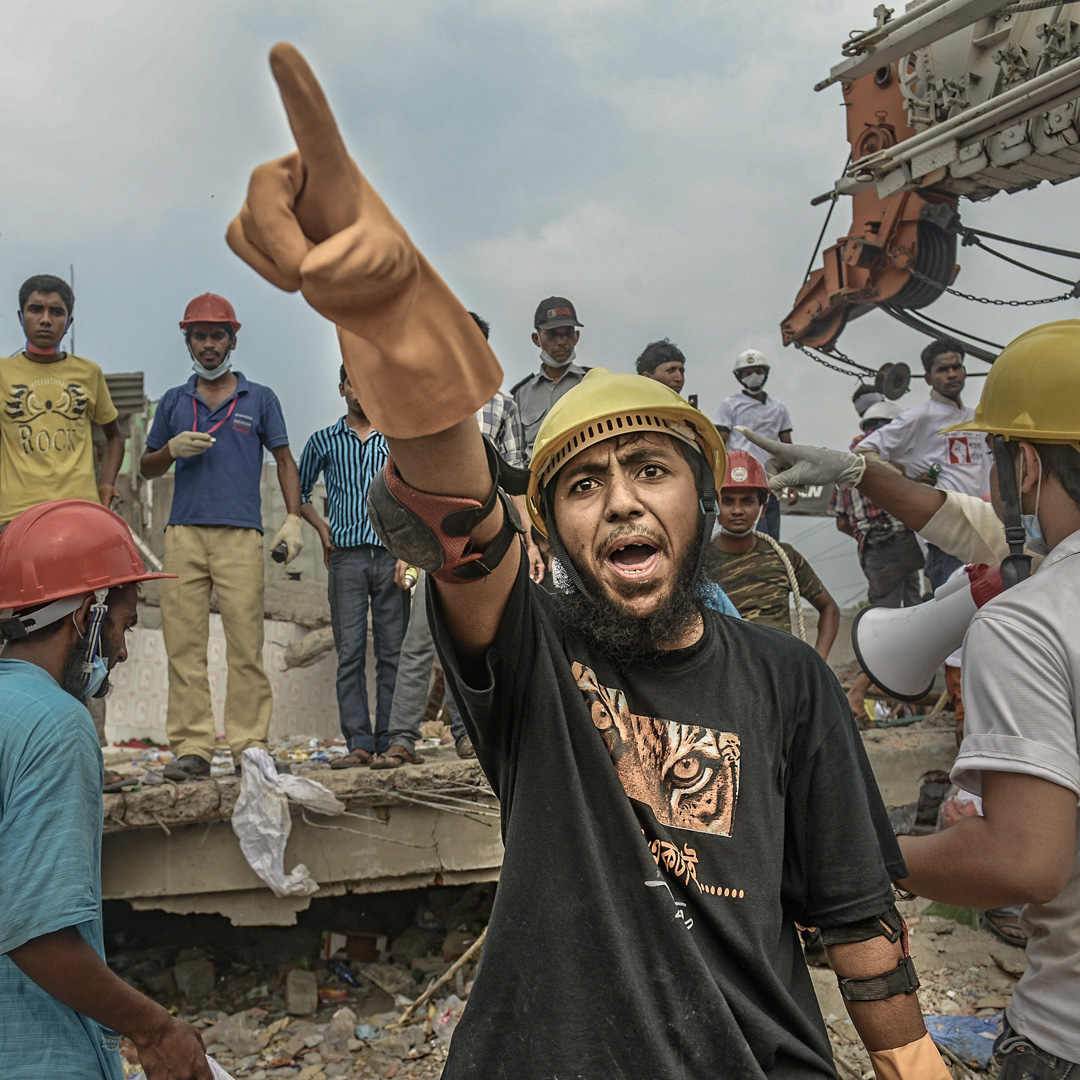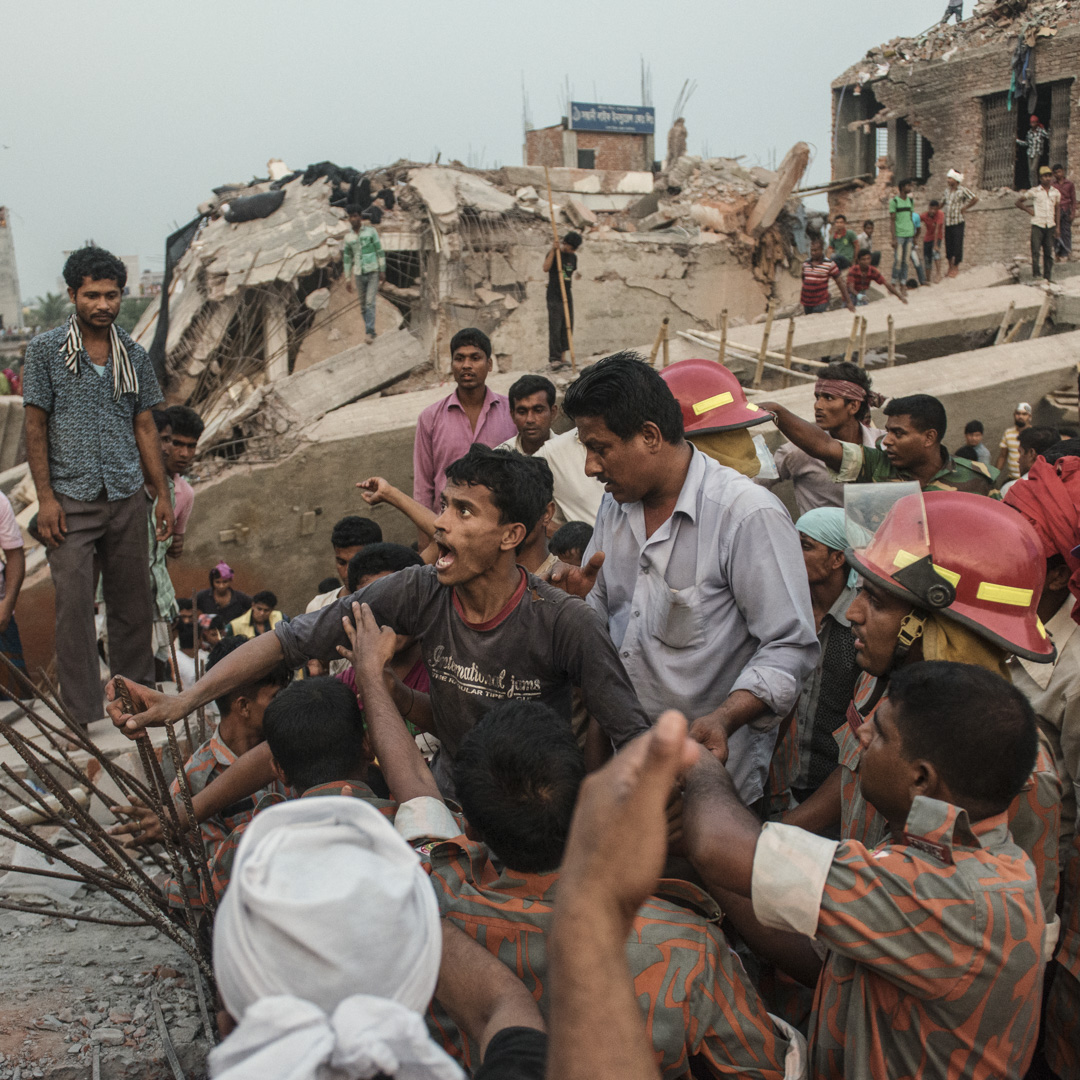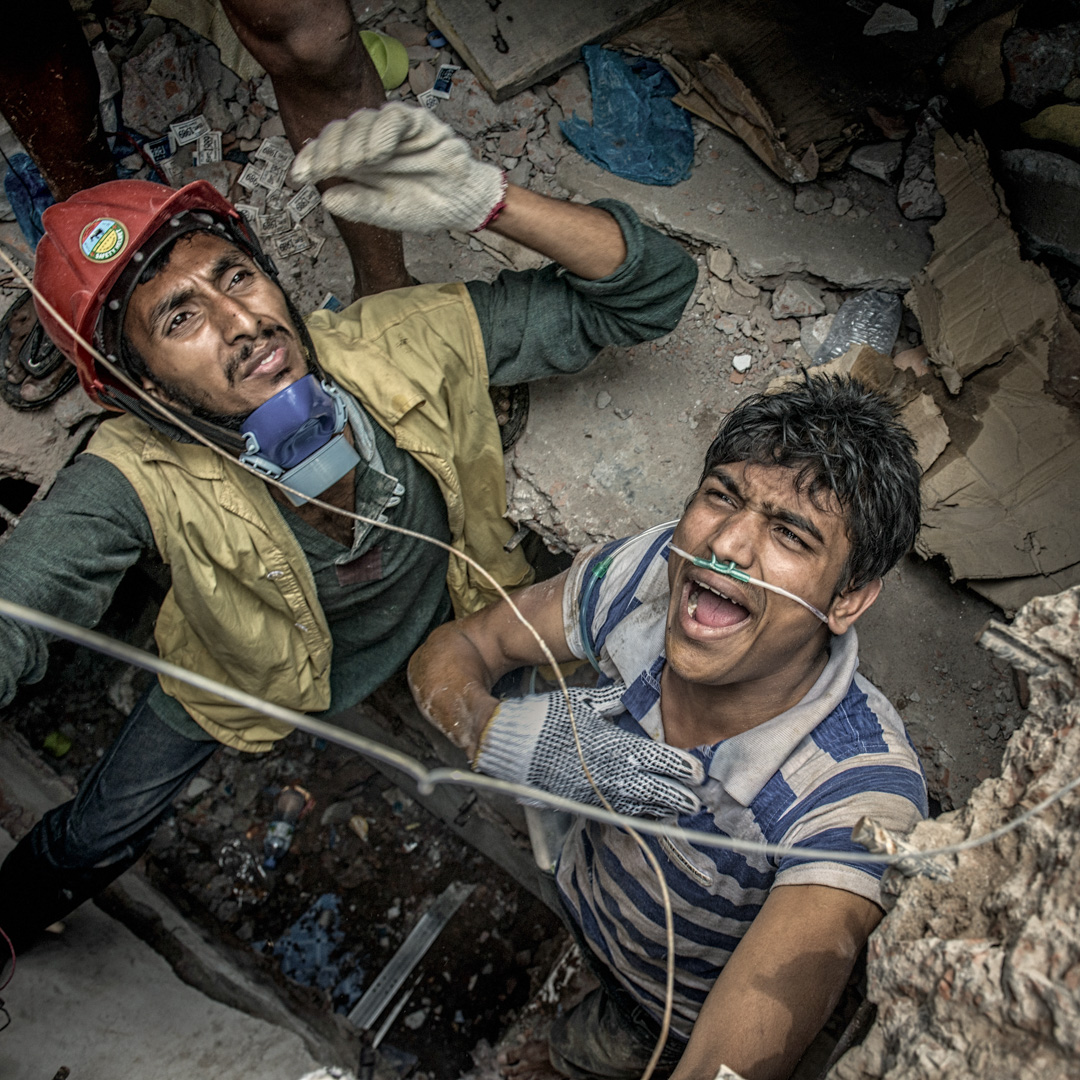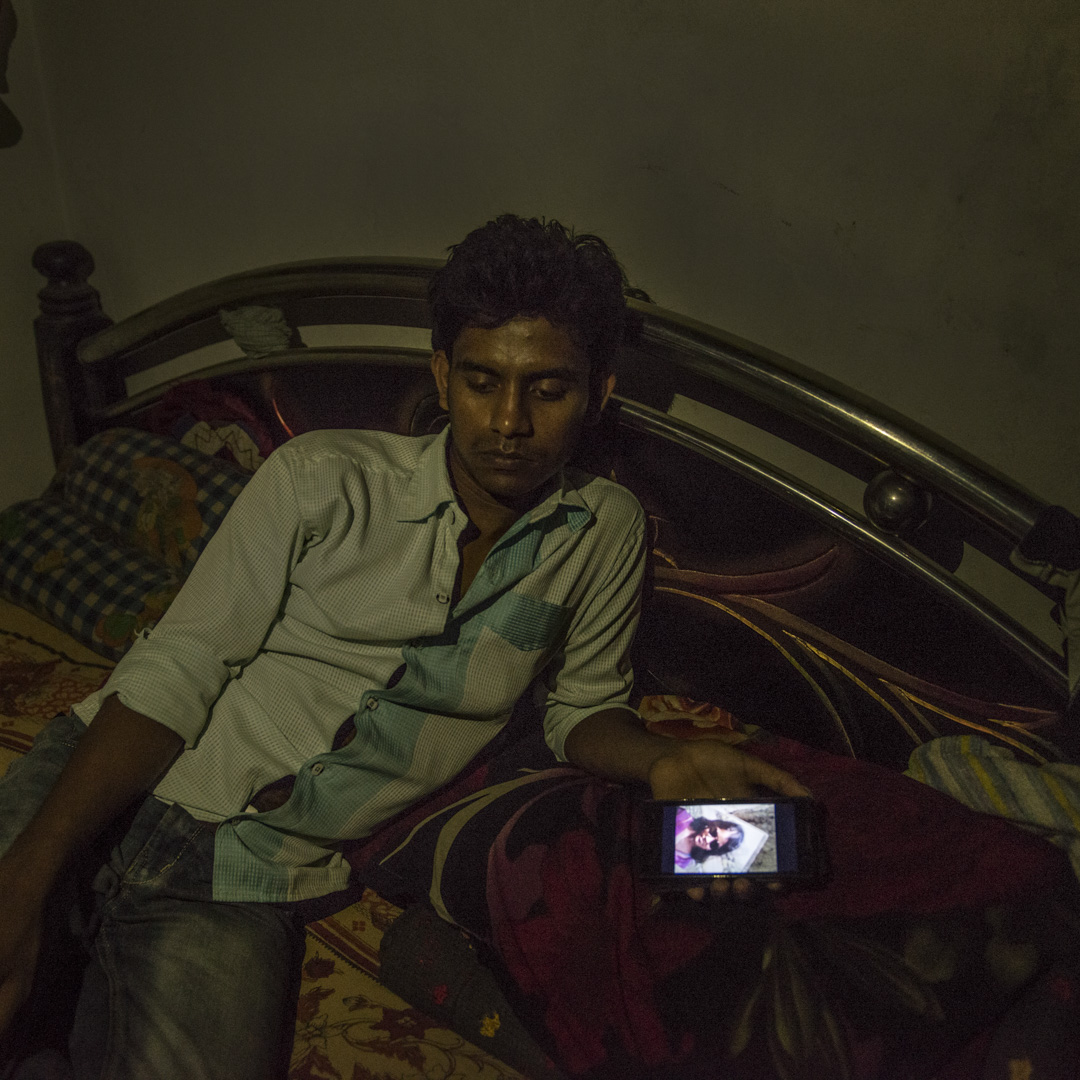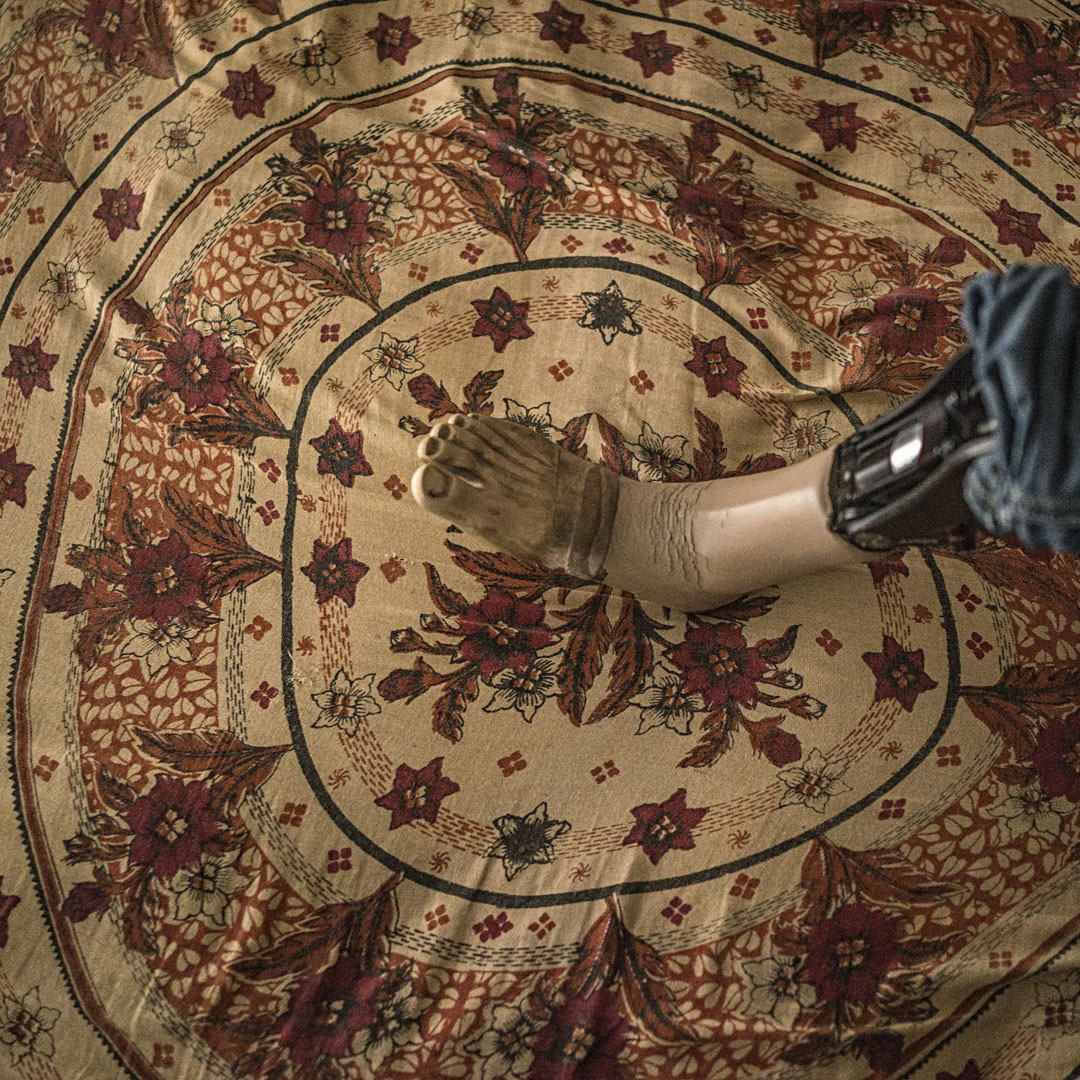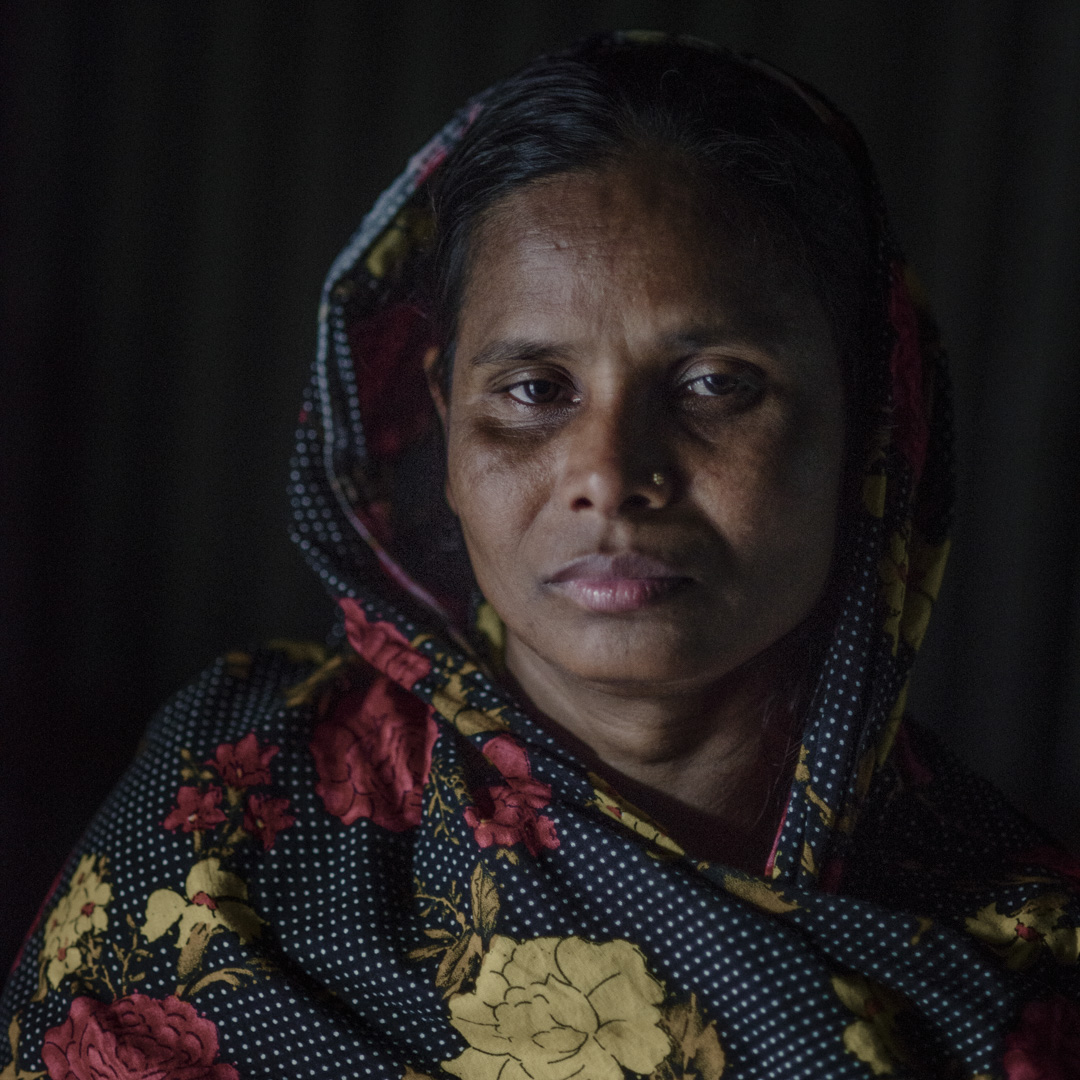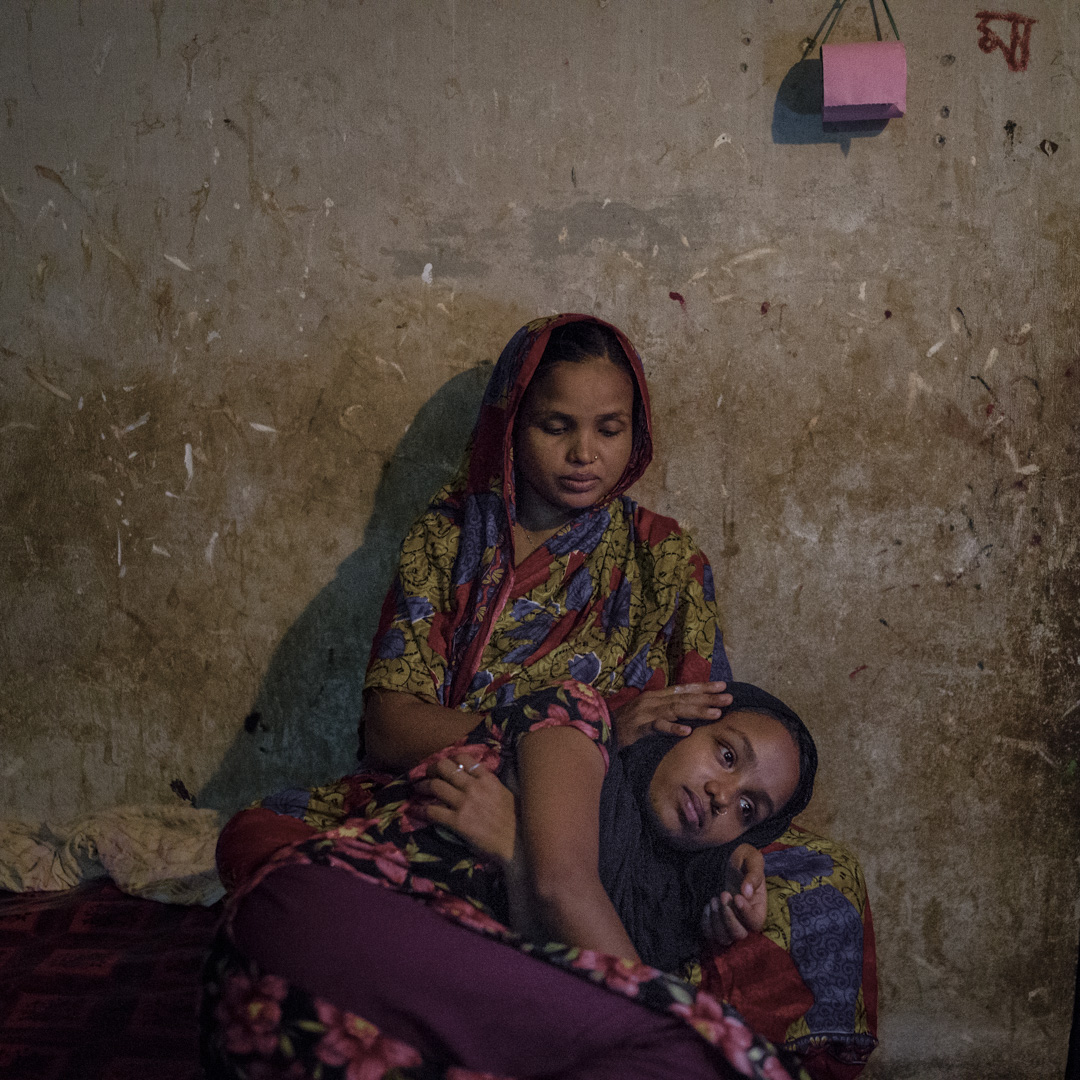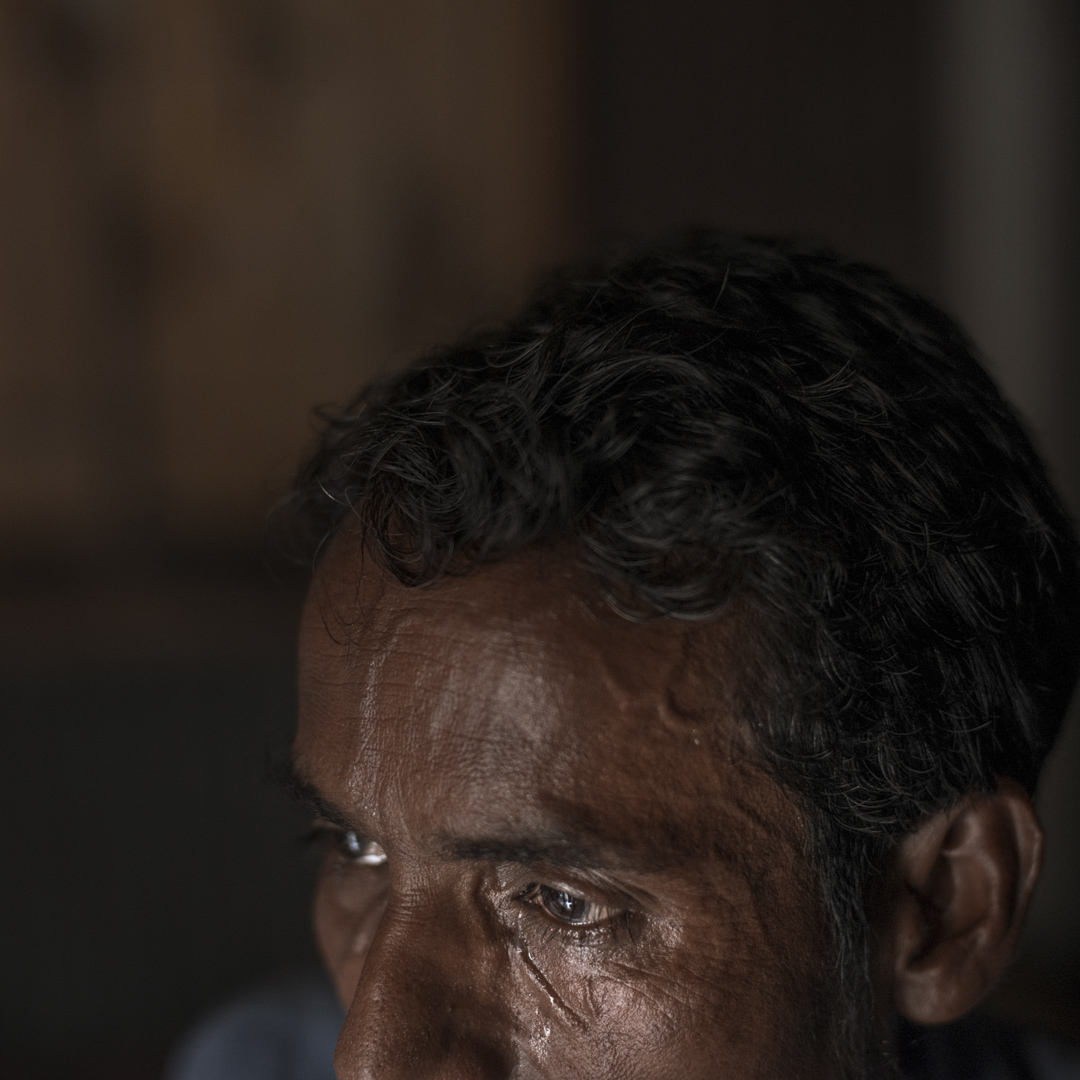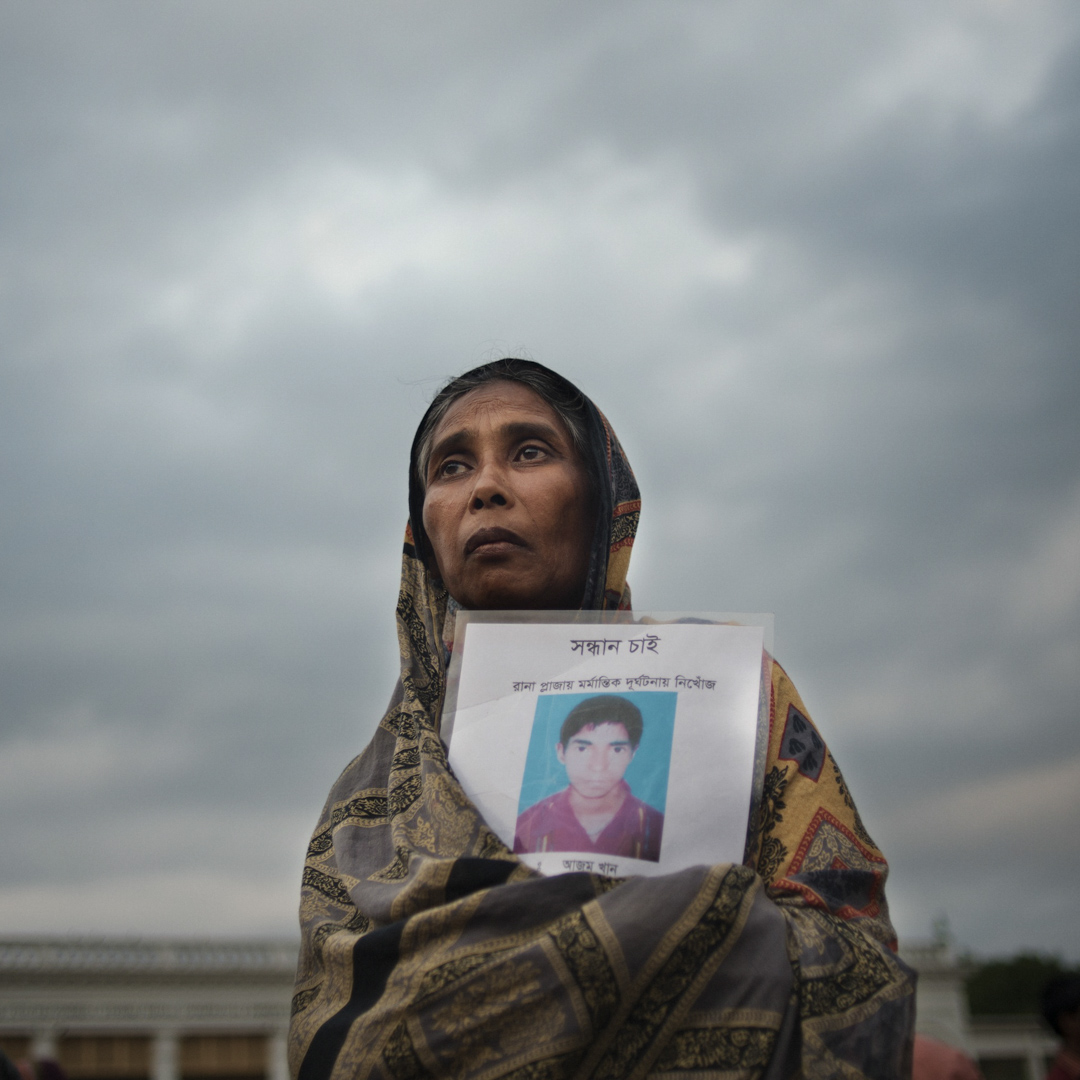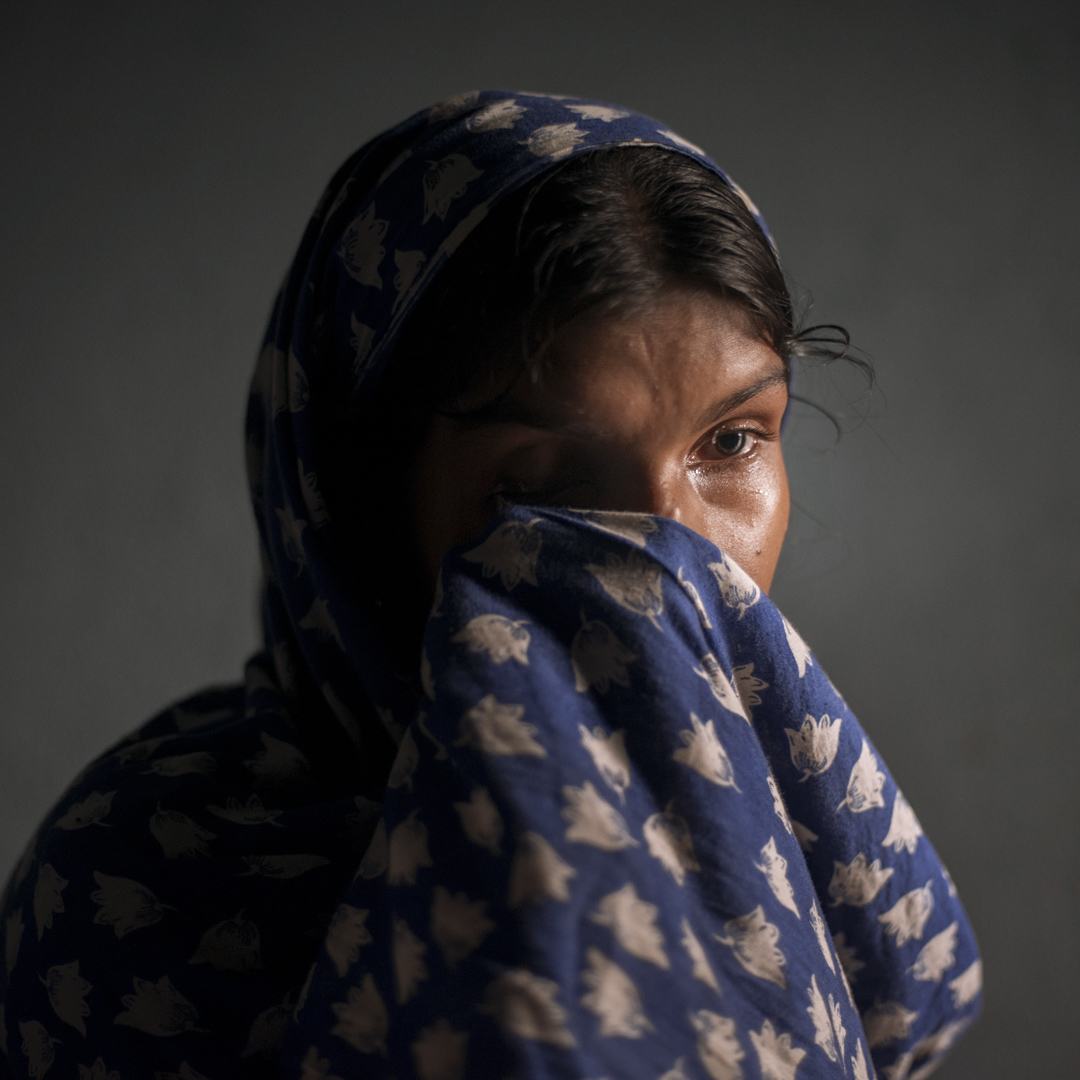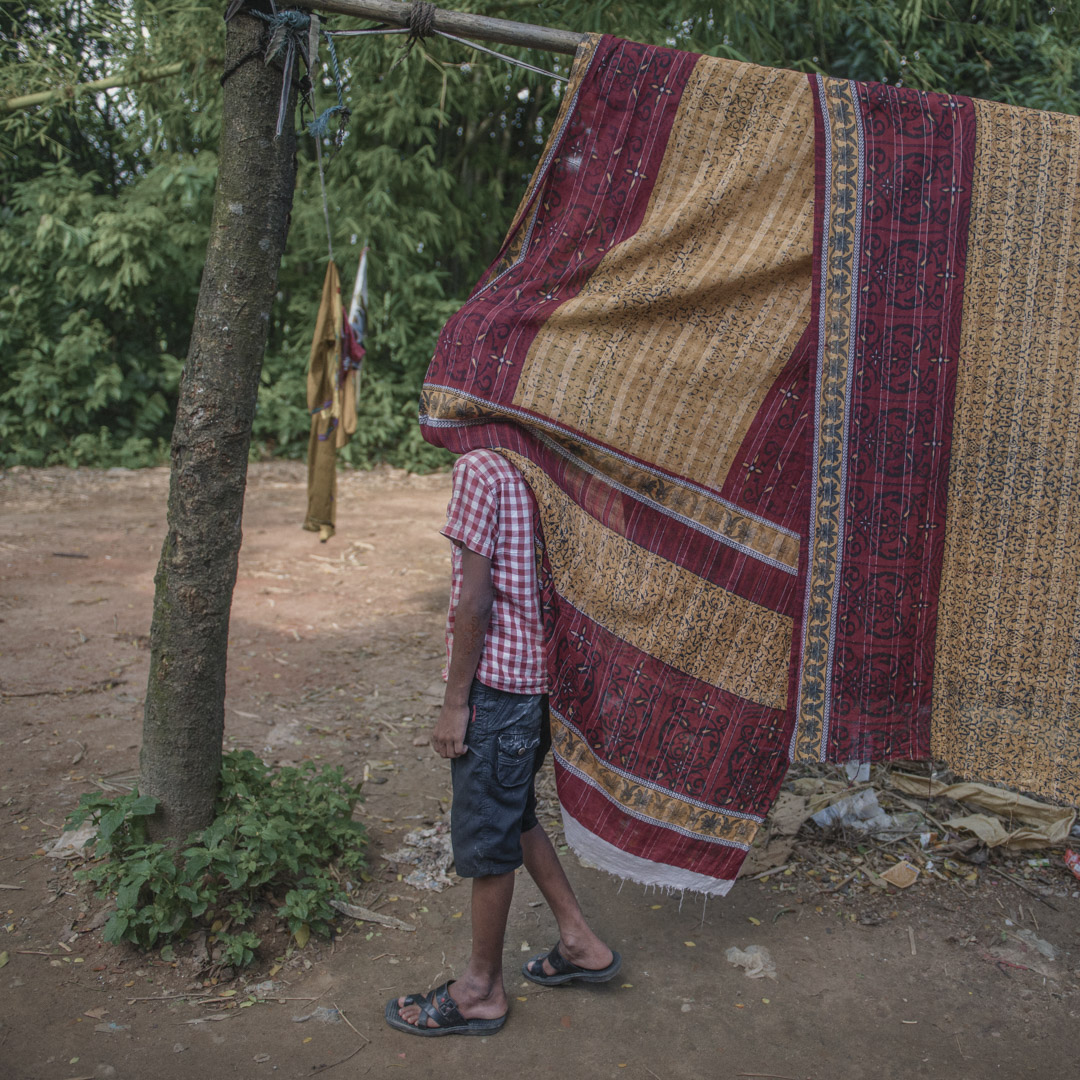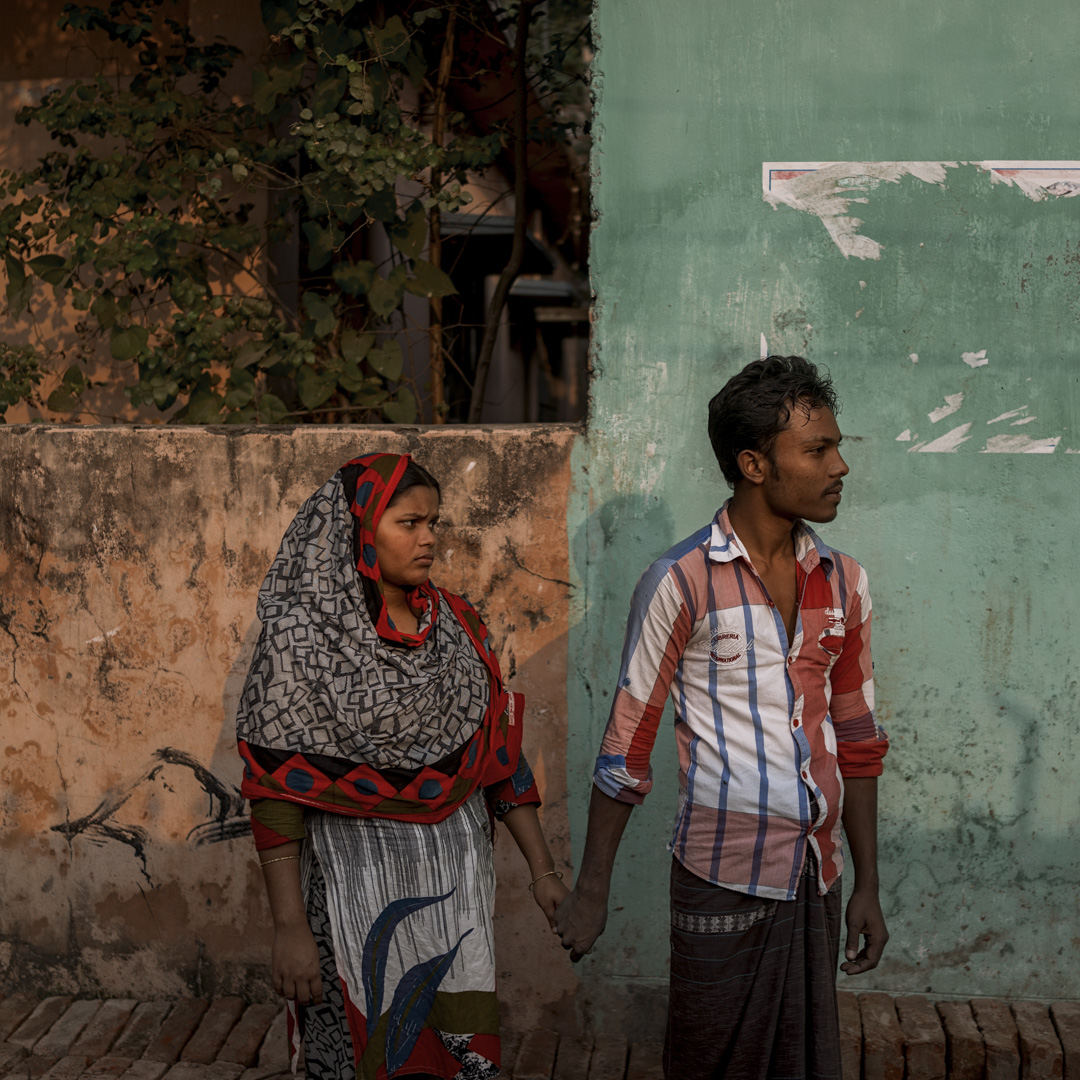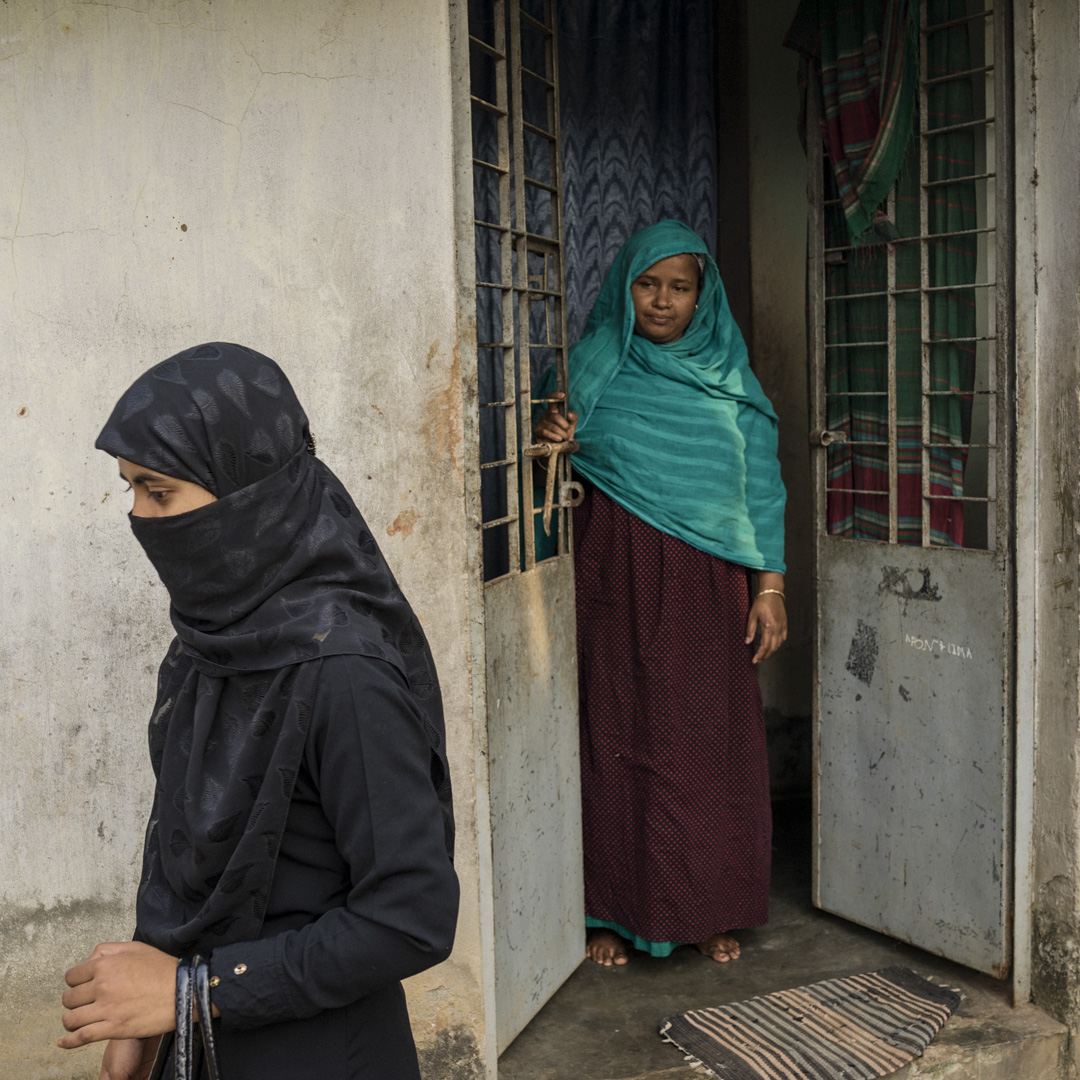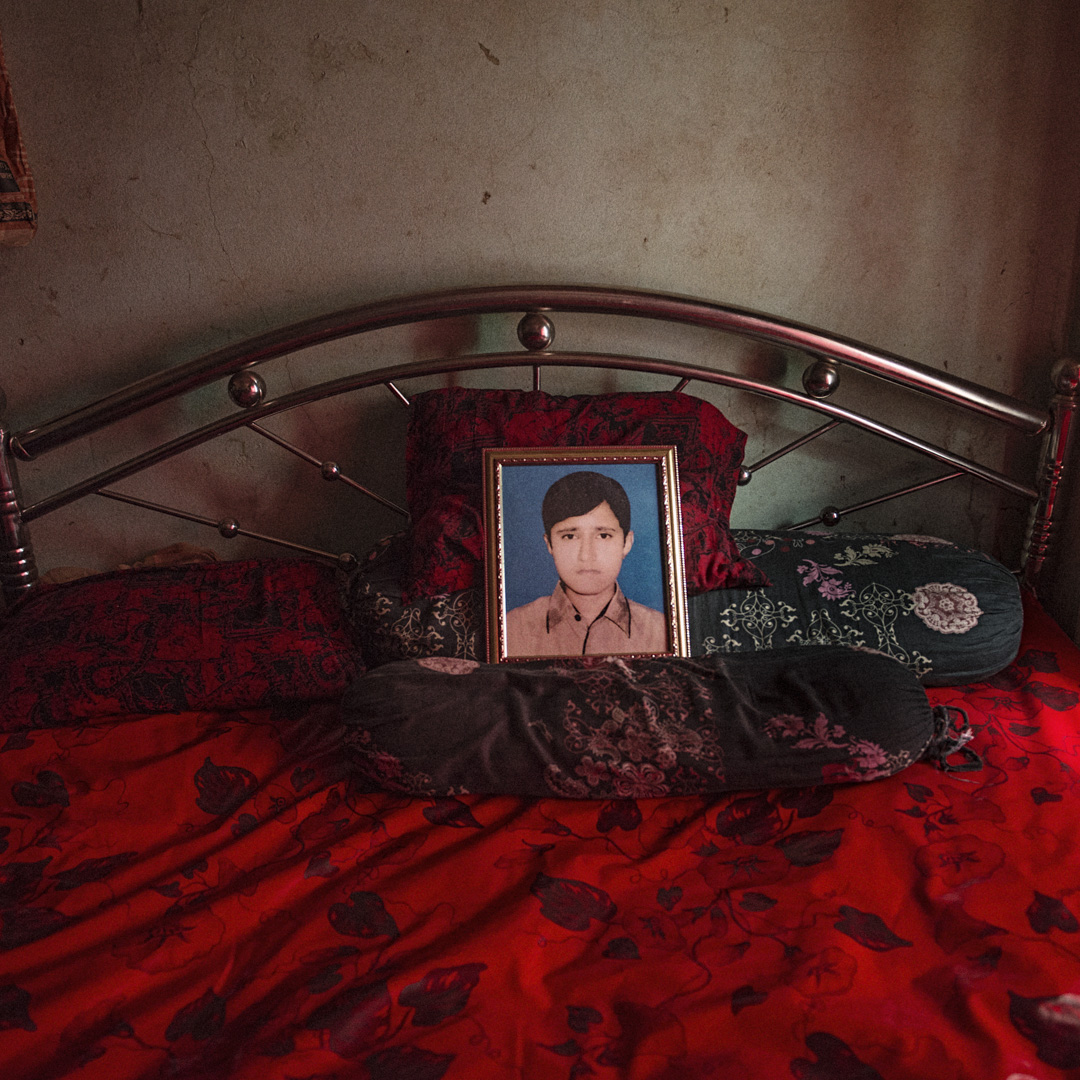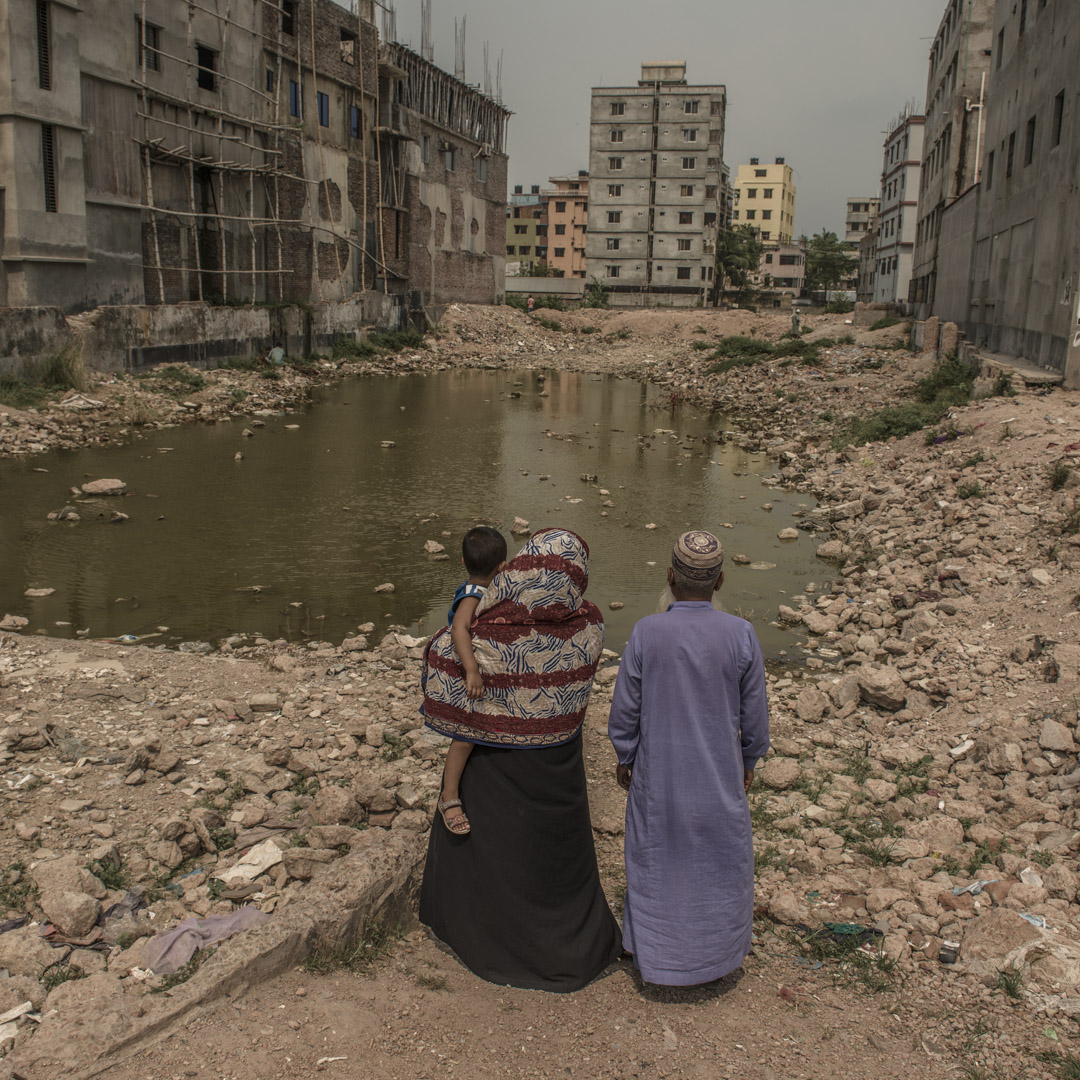After Rana Plaza, 2015
Born in Bangladesh, Ismail Ferdous has lived among people closely linked to the textile industry. Two years after the collapse of the Rana Plaza and deeply affected by this tragic event, Ismail Ferdous continued to photograph the daily lives of the victims and their families while the international media shifted to other tragedies around the world.
By documenting the lives of the Rana Plaza victims, he explores how their lives have changed and the challenges they now face.
For Ismail Ferdous, documenting this issue is an attempt to give a voice and faces to the victims of the textile industry, which is continuing to exploit Bangladeshi workers in other factories.
At this time, many of the international garment companies responsible for this tragedy still have not compensated the victims who suffered the loss of loved ones, for some the loss of their ability to work, and others who suffer from post-traumatic stress disorder.
In order to hold these companies accountable and avoid further disasters, Ismail Ferdous advocates for international visibility and awareness of the stories of the Rana Plaza victims.
Rozina Akhter, 30, originally from Manikganj, was stuck under a beam during the Rana Plaza incident. The beam fell down on her waist and she fainted. After some time, she woke up to notice she could not move. She did not realize then this would be the turning point for her life, as she will have difficulties doing anything with the same ease as she once had before.
She shares, “Before the Rana Plaza accident, I earned my own money and lived my life in my own way. But now I am stuck at home as a handicapped person. I cannot do anything without the help of another person. Before, I had a good life, I did my work on my own, I earned money and I took care of everything but now I cannot function alone. I need help from my mom and sister in every single thing I do—even household chores. If I want to carry a heavy bag with groceries, I cannot even do that. I have to ask help from my husband. I feel really bad about this. Sometimes I feel like dying rather than living this life of constantly taking help from people.” Although she is handicapped and struggles to complete small daily tasks, she tries to do as much as she can, from cooking meals for her family to getting her daughter ready for school in the mornings.
On the day of the Rana Plaza collapse, Raihan Kabir, 24, was stuck under a heavy machine that is used to sew jeans and pants. It fell down on his legs, and he was entrapped for 14.5 hours until he was finally rescued. Unfortunately, it was too late for him. He was first taken to Dhaka’s CMH (Combined Military Hospital) and then transferred to another hospital.
He said, “I overheard the doctor saying that my right leg had been infected and they could not keep the leg. My leg was aching so much that I could not tolerate it. I told them to amputate my right leg. I could not bear the pain any longer. It won’t be a problem. After another operation, I was feeling a bit better. My leg was not aching anymore. After the operation, since I was feeling a bit better, they moved me to CRP.”
Raihan Kabir also lost his girlfriend, a fellow co-worker at Rana Plaza, during the collapse: “I always have her picture with me. I look at it whenever I am missing her. When I see her photo, I feel better”.
Mohammad Shahin and his wife both used to work in Rana Plaza garments factory with their relatives. His younger brother Belal Hossain is still missing.
“My baby brother went missing and now I cannot work. My parents do not want another son of theirs to go missing if we work in garments again, and the building collapses. They are already suffering very much due to the loss of their youngest son. If I take a job now, and then any accident happens then everything will go back to the same. Now my parents are able to see their children in front of them but perhaps the Rana Plaza incident can happen again, and they will be unable to bear that. We demand that our government gives us some compensation considering our situation. It is difficult for us to survive.”
Moving forward, Mohammad Shahin’s family seeks assistance to take care of their medical wounds, and psychological help, after facing such trauma. Although they have yet to receive answers about their youngest brother, Belal’s disappearance, they would like to move away from Savar and start life anew in their original village in Jamalpur, a coastal city, outside of Dhaka.
“We want to work as volunteers around Bangladesh. But we are unemployed so we are looking for a benefactor who will provide us support. As we do not have any jobs, we are unable to move around. When some accidents happen we cannot go there to help as we do not have any money. We will feel grateful if the government or some other people gives us support”, says Mobarak Hossain.
Shobuj Hosain Ridoy (23) with his mother. He was a volunteer during the Rana Plaza Collapse.
“We heard the story about liberation war, story about many dead people, But didn’t ever see with own eyes. But when Rana Plaza collapsed, we felt like we came into a warzone. We took bless from mother before coming into the warzone. I feel proud to take part in this battle.”
His mother said “I didn’t let them go for money. Some people asked how much money did I get. I did not expect anything. I just wanted my son’s name in credit. I said my son, Allah will help you. The parents of the people you saved will pray for you. We don’t need money.”
Mosammat Rehana Akhtar, originally from Jessore, migrated to Savar in hopes of bringing about change to her difficult life. She worked at New Wave Textile Limited on the 7th floor of Rana Plaza. In the horrific accident, her leg was buried and had to be amputated in order for her to survive.
“One of my hands and both legs are paralyzed. I can’t walk now. I received injury on my head. There are too many health complications now. I feel a headache and suffer from fever very frequently” – Mosammat Momota Khatun, victim of Rana Plaza Incident.
Rabeya Khanam, victim of Rana Plaza collapse, laying on her her mother’s lap.
Rabeya Khanam and her sister both worked at Rana Plaza. They are from the district of Borguna. Rabeya is now 18 years old but was only sixteen at the time of the tragic incident. The two sisters began to work in the garments industry due to their family’s difficult financial conditions.
Her mother said “My daughters were missing and like any other mother in the world, I felt terrible. When I found one daughter but I could not get another one back, I thought I will never find her again. I was continuously praying to Allah so that I can have both my daughters back.”
Ismail Sikhder lost his wife when Rana Plaza collapsed. Her name was Nazma. She was 37 years old.
Nazma’s picture with her son becomes only a memory as the disaster claimed her life.
Rahima looks for her missing brother, Azam Kahan in the collapse site in 2013.
“If I could find my brother’s body, we could have touched him and buried him and could consol our mind that he got a proper burial.”
Rahima’s brother Azam Khan, and daughter Bilkis worked in garments factories located in Rana Plaza. BIlkis, and Azam went to work on the fateful day. Bilkis returned alive, but no trace of Azam could be found.
Amena, victim of Rana Plaza disaster, was both lucky because she could get out from there alive, and at the same time she was unlucky because the physical and mental trauma caused by the horrible experience changed her forever.
“My future plan is to make my daughter a doctor. Since I had her I dream of that. I want her to treat everyone.” Nazma now lives with her husband Ashraf and daughter Ariana. She has a job and big dreams about their future.
Mahinur Akhter is one of the survivors of Rana Plaza collapse. She used to work in Fantom Factory on the 4th floor. On the day of the accident she started working at 8 am, as her supervisor said that if she does not finish her work fast, then they will make them work overtime at night.
Mahinur was 13 when she started working inside Rana Plaza, and by the time the building collapsed she had worked there for 3 years. All her friends were killed by the disaster, but she survived.
Shagor is Jahanara Begum’s (She died in Rana Plaza) son. He is a few years younger than her daughter Shagorika who is 11 years old.
Losing his mother after the Rana Plaza collapse caused trepidations within his young self.
After the disaster of Rana Plaza, Sheuli found Mohammad Al Amin Hossain, with whom she could look forward to a better life.
Sheuli got married to Mohammad Al Amin Hossain a few months later the Rana Plaza disaster and he is supporting her since then.
“My spinal cord was injured, for which I didn’t get a proper treatment. Still I feel pain when I work” Taslima Akhter, victim of Rana Plaza Collapse.
Taslima going to a new garment factory with her raw mental wound from the Rana Plaza collapse. She said, “Now-a-days workers don’t get leaves when they need. They have to ensure the new increased target since the salary has been increased.”
“I still feel scared when the memories of that accident come to my mind. When light is turned off in my room, I can hear the screaming people in the dark, so I keep the light switched on when I go to bed.”
On the photograph: Taslima and her friends in Rana Plaza. Most of them died in the collapse.
Fazle Rabbi was killed in Rana Plaza collapse.
His mother said “He had lots of dreams for himself and us. He promised he will improve our condition in the future. But my son went somewhere from where he will never come back. My son was very fond of me. He would always say that he does not need anything except caring about us.
When I heard the Rana Plaza building had collapsed, I ran towards it from our house. When I saw the building had completely collapsed, I could not figure out what to do. I requested a guy in front of me to give me his phone so that I could call my eldest son. For the next three days we searched for him in every possible place but we could not find him. We went to all the clinics around Savar so many times but there were no traces of him. On 27th April morning we went to Enam Medical Hospital because we heard victims from the 4th and 5th floors of Rana Plaza had been rescued that day. But he was not there.”
Fazle Rabbi’s father “Whenever I go in front of Rana Plaza, I feel like my son will come back suddenly. It feels that my Rabbi will return to me and I can find my son again. But I know he is no more. I see so many other children his age, and my heart aches for him. My elder son told us to change our house but I denied him. I told him this house is attached with my son’s memories and I will not leave this place at any cost.”
